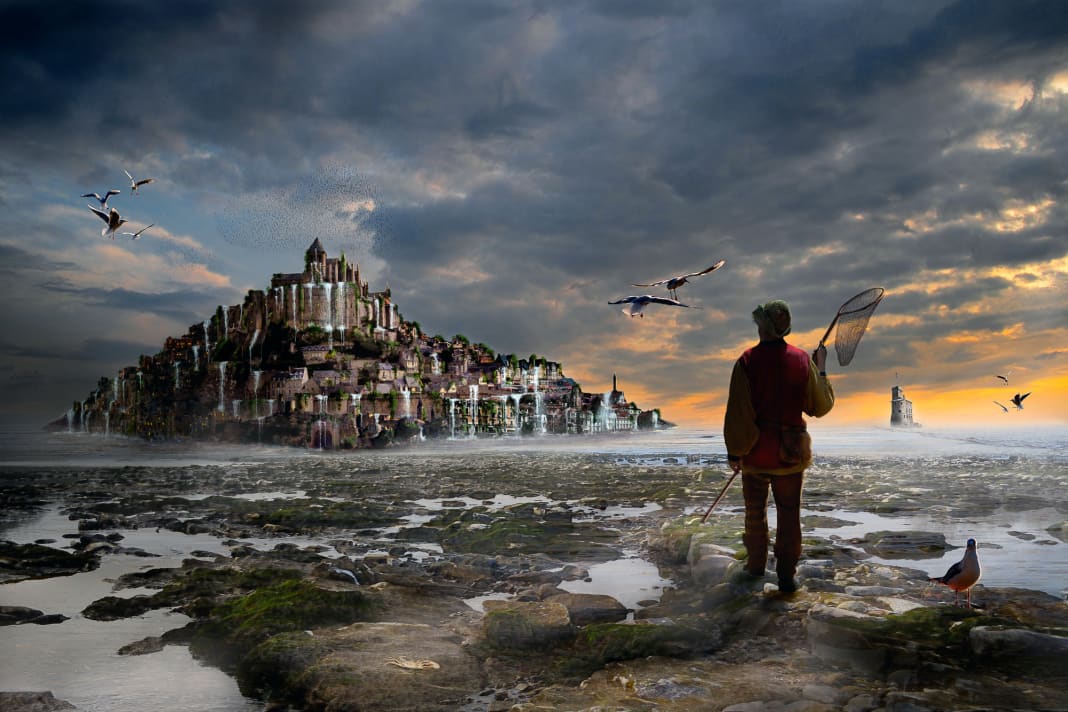





In this article:
The Baltic Sea is a magical sea. Anyone who has ever travelled on it and enjoyed its very special moods and characteristic atmosphere knows this. It exudes a magic that is unrivalled. So far, so marvellous.
For some people, however, the Baltic Sea is not only a magical, but also a mysterious place full of secrets and inexplicable phenomena. Because contrary to the assumption that the well-known area has long been explored down to the last detail, these mysteries leave room for imagination and fuel the thirst for knowledge. They lead from times long past into the present, from the depths of the sea into the depths of the universe. In truth, the Baltic Sea is a sea full of myths and legends and things that are sometimes difficult to explain rationally.
Witch rings on the seabed off Møn
Off the Danish island of Møn, strange circles can be seen on the shallow seabed. They have dark outlines and are close together. Many are almost twice the size of the centre circle on a football pitch - around 15 metres. Naturally, the ominous ring patterns have attracted and continue to attract seekers of meaning of all calibres.
And the experts in Übersinn explained straight away. Because they resemble the legendary crop circles in some fields, they can only be messages from outer space - possibly the landing sites of submersible UFOs? Or they come from a hitherto undiscovered civilisation in the Baltic Sea; they could be the beds of submarine allotment gardeners. Or the dancing grounds of aquatic witches who organise an annual water ballet off Møn on Walpurgis Night. The theory that they were simply bomb craters did not seem quite so far-fetched. The only thing that was easy to prove was that the rings were made of seaweed. Conclusive explanations are still a long way off.
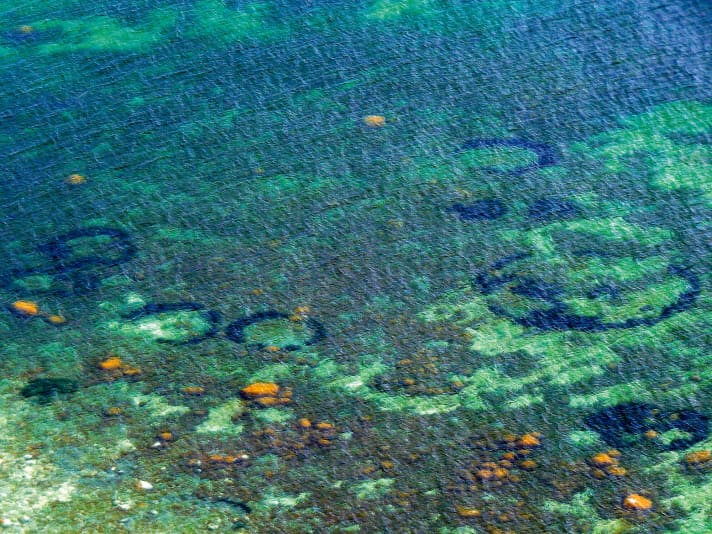
Researchers at the University of Copenhagen now believe they have successfully got to the bottom of the phenomenon on the seabed. According to them, the calcareous terrain, similar to that of the Rügen chalk, is responsible for the rings. It contains little iron. And this normally neutralises toxic sulphides such as hydrogen sulphide, which are caused by organic sediments.
Off Møn, however, this does not work: the seagrass, which actually grows into huge mats, dies off. Only young seagrass at the edge resists the attack of the sulphides, forming the underwater circles with its offshoots. However, if the input of organic substances from agriculture continues to increase, the young stalks will not be able to withstand much longer and soon there will be no more seagrass in the area. Sometimes the intoxication of fantasy is preferable to the sober truth.
Vineta- the Atlantis of the Baltic Sea
It is said to be the Atlantis of the Baltic Sea: the legendary Vineta. It was supposedly an incredibly rich place. "The city is filled with goods from all the peoples of the north, nothing desirable or rare is missing," wrote the chronicler Adam von Bremen in the 11th century. The bells were made of gold, the windows were set with diamonds, the inhabitants were dressed in the finest furs, or so the story went. But the greed of the townspeople was their downfall.
Since then, Vineta has disappeared - more or less. Only once a century, on St John's Day, does it rise from the waters. Then those who have some money in their pockets, even if it is only a cent, are in a good position. That would be enough, they say, to buy the whole town.
This coincidence has not yet taken place, leaving archaeologists with nothing but speculation. It is said that Vineta lies off Koserow on the island of Usedom, where its bells can still be heard from the depths. As early as the 16th century, people made pilgrimages in droves to the "Vineta Reef" off Koserow, believing they could hear those bells. Nearby Wollin, now in Poland, also claims Vineta as its own; there is evidence of a sunken trading settlement here that is around 1,000 years old. Vineta was also thought to be located off Arkona, Rügen's northernmost cape (some even believe it to be a sanctuary of the Greek sun god Apollo). Or at the Peenemünde Hook near the island of Ruden. Or off Barth at an estuary into the Saaler Bodden, which is now silted up.
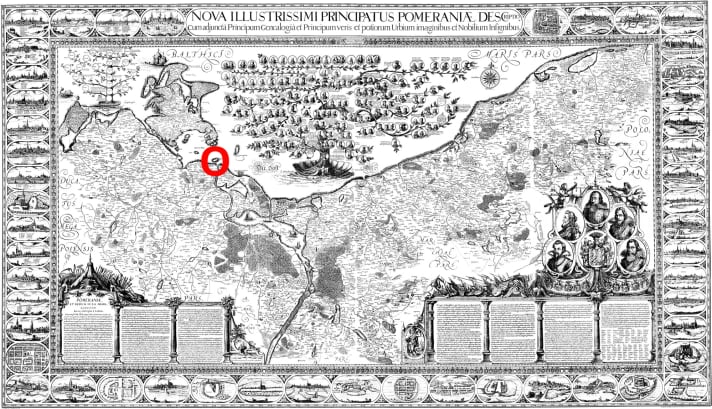
Vineta may also be located off Hanö Bay in Sweden, at the mouth of the river Verkeån. Some time ago, archaeologists discovered a settlement from the Middle Stone Age that had sunk into the lagoon. There were no diamonds sparkling on the seabed. Instead, the researchers found several connected fish traps made from woven hazel rods, which are now believed to be the oldest fish trap in Northern Europe. A pickaxe made from elk antlers, high-tech from 7,000 BC, was also found by the scientists. Enigmatic signs can be seen on it, a kind of writing. It has not yet been deciphered. Perhaps the true history of Vineta is written on it.
Baltic Sea UFO off the Åland Islands
Some see the strange structure as a crashed alien spacecraft, others as the wreckage of a ship that is as secret as it is high-tech (but unfortunately still sunk). The experts endeavour to be objective and speak of a "Baltic Sea anomaly".
The diameter of the circular object is around 60 metres, it is about four metres high and lies at a depth of almost 90 metres north of the Åland Islands. Better: it stands on a kind of pillar that is eight metres high. If you want to, you can recognise "stairs" in the structure and see "entrances", "corridors" and "superstructures". The shape of the, erm, thing reminds some people of a beetle, others of a falcon in flight. Fans of the US film series "Star Wars", however, assume that the structure is part of the Imperial Starfleet. A long "skid mark" in the seabed seems to support the spaceship hypothesis.
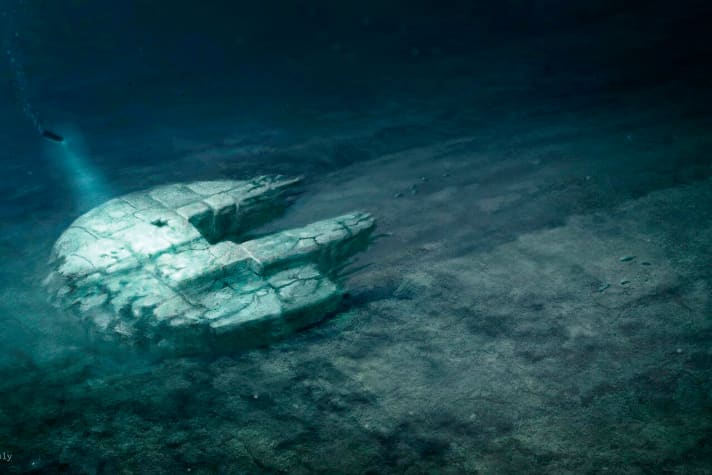
The Swede Peter Lindberg, who discovered the structure with a team of treasure hunters in 2011, reported strange experiences. According to him, the on-board electronics of his boat failed right above the "wreck"; neither mobile phones nor satellite phones were still working. A little further away, everything was back to normal. According to speculation, this was due to a metal that does not occur on Earth. In addition, a previously undecipherable radio signal was registered. A diving robot failed in the vicinity and a radar recording provided "ghostly photos". The speculations shot up like monster waves.
Most scientists have so far assumed that it is a so-called geofact, similar to the Yonaguni Monument in the East China Sea off Japan; the UFO-like shape is a coincidence. At first glance, it appears to be a man-made pyramid. However, its fairly precise edges and lines were most likely created by natural erosion.
Glaciers from the Ice Age could therefore be the constructors of the Baltic Sea UFO, they brought the colossus here and the water polished it into its current shape. It consists mainly of volcanic rock. Soil samples have revealed the presence of the ferrous minerals goethite (named after Goethe) and limonite. These are by no means extraterrestrial materials.
Even human builders are possible. The Baltic Sea was only formed after the last ice age, around 12,000 years ago. Before that, early architects, avant-garde geniuses of the Stone Age, could have created the wondrous structure. And the rising sea level washed over their masterpiece. Some time ago, a smaller geofact was also found near the large one.
Or is it an exploration UFO after all? The dinghy of the supership? As long as it's not clear what it really is, everyone is right.
Sea shooting in the Baltic Sea
Crash, boom, bang! What was that? The thunder of a thunderstorm in beautiful sunshine? A military jet that broke the sound barrier? Possibly. But it could also have been an event whose nature still puzzles researchers: the so-called "sea shooting". It usually occurs - even elsewhere - in clear, calm weather, when the sea is smooth and the air is warm. Fishermen in the Baltic Sea are familiar with the "sea bear" in this context, a wave that seems to come out of nowhere after a huge bang has shattered the silence, causing the water level to "shatter" and the ground to tremble.
Most of the detonations are irregular. After some explosions, however, you could set the clock. In Flanders, for example, such blasts reliably called the farmers to lunch - but only in summer, when it was nice and warm and there was no wind. In earlier times, people who were not quite so relaxed would cross themselves and hope that the "wrath of God" would pass them by. Or that the wrath of the spirits of the deep would soon be extinguished.
It was later surmised that seaquakes could be the cause of the volcanoes in the Abyss rumbling so violently. Or that submarine landslides were responsible. However, there are neither volcanoes nor submarine mountains in the Baltic Sea from which huge mudslides could originate. So was it the "devil's cannons" after all, as one superstitious captain wrote in the logbook?
It is still not 100 per cent clear how these detonations occur. The most plausible theory is that the air above the water is compressed by strong gusts of wind and the balance is disturbed. It is restored with a thunderclap. Of course, the whole thing is far more complex and not yet fully understood. But it certainly will be one day.
Perforated stones, amber and boulders
Perhaps the beaches are the most mysterious places on the Baltic Sea coast. Nowhere else are there so many mystical and mysterious objects.
Firstly, there are the chicken gods. These are flints into which the sea has "drilled" a hole over thousands of years. They are as small as grains of sand or almost as big as boulders. Anyone who discovers them is doubly lucky. Firstly, they are quite rare. But secondly, they are lucky charms. The initiated know: You should aim at the sun through the hole and then turn round three times. Now the hole stone is ready to fulfil a wish.
It doesn't matter how big it is, it always has magical powers. The fishermen and farmers of the coast already knew this and hung such a chicken god over their doors to protect the house from being struck by lightning. Tied to fish traps, it kept the nets on the bottom and also lured the big fish into the meshes, as if at the command of a higher being. The farmers also placed chicken gods - hence the name - in the nests of their poultry, along with the wish for more eggs. Miraculously, it worked and the hens literally started laying.
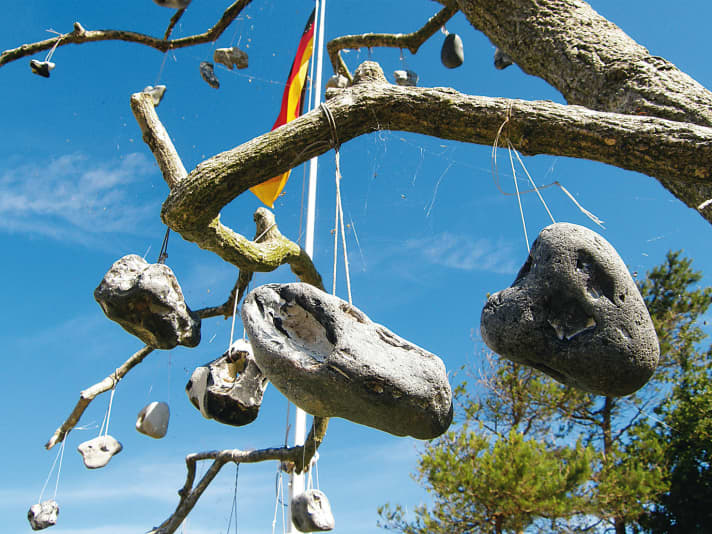
The magical powers of amber
Another wonder stone of the beaches is not a stone at all - amber is fossilised resin from a prehistoric tree. Over millions of years, it has not only become quite hard; it has also become charged with spiritual energy. At least that was the view of the Viking shamans, who packed amber in their boats to protect them against storms. Or even earlier the people of the Bronze Age, who used the brown-yellow lump of resin as an amulet. Others buried it in front of the house to protect themselves.
To this day, amber has retained its supernatural power. Babies who wear an amber necklace around their neck are said to find it easier to teethe. Such a necklace, attached to the affected area, can defeat rheumatism. Amber oil, extracted in a complicated process and dripped into the corners of the parlour, drives the ants out of the house and the demons hiding there with them. Amber powder was once added to medicines that helped against sore throats or even syphilis. It was also used to treat anxiety and depression - although this may not necessarily have been due to the amber. Rather, the search for them may have been helpful; a walk on the beach is known to awaken all spirits.
Boulders weighing tonnes
Even more myths and legends surround erratic boulders. Many of them weigh dozens of tonnes, some even hundreds. Rügen's largest, for example: The stone called Buskam in front of the seaside resort of Göhren weighs a whopping 500 tonnes. The boulders lie in the water, on the shore, in the coastal forest, sometimes even in the fields. For a long time, it was unknown how they got there. The devil himself hurled them against churches out of anger, giants played marbles with them, aliens dropped them as "ballast" from UFOs.
The origin of the giant pebbles was still unclear until well into the 19th century. It is now clear that they travelled with the ice-age glaciers. The glacial colossi travelled from the far north of Europe to the coasts of the Baltic Sea, and the wanderlust even drove some erratic blocks to the edge of the Alps. But even when this mystery has been solved, the gigantic stones will probably never lose their magic.
Fossils can be found everywhere. All you need is a good eye and a little imagination to spot them: ducks, snails, cats, insects. But some fossils cannot be assigned to any known form of life today: Trolls, goblins, angels - all fossilised and represented in a wide variety of sizes. Some of them have strange shapes, bulbous noses in faces with only one eye, figures with two heads and three arms, winged, heart-shaped figures. Possibly proof that aliens populated the Baltic Sea at some point after all? Very puzzling in any case.
Just like many other things in the supposedly familiar Baltic Sea.

